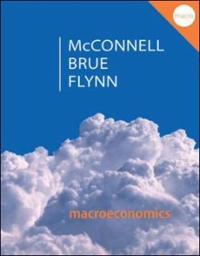Please help
Question 6. 10 points This question will consider the market for home fire- places in Fargo. North Dakota (where the winters are very cold!). Fireplaces are supplied by perfectly competitive firms. The marginal cost of a fireplace is constant and equal to $10.000 per fireplace, you can write MC = 10 to show MC in terms of thousands of dollars per fireplace). The demand for fireplaces in Fargo is given by Q - 60 - 2P. where P s in thousands of dollars per fireplace, and Q is in thousands of fireplaces! (a) [6 points. Draw a graph illustrating the demand and supply of fireplaces in Fargo. What are the competitive equilibrium price and quantity sold of fireplace? (b) 5 points. Fireplace chimneys emit air pollution that is harmful to people's health. Suppose these health damages are valued at $10,000 per fireplace (you can write d = 10 to show damages in terms of thousands of dollars per fireplace). Compute the deadweight loss from this air pollution externality and depict it on your demand and supply graph. (c) [5 points.] Consider addressing the externality by imposing a Pigouvian tax that must be paid by the sellers of fireplaces. What should be the size of the tax (in terms of thousands of dollars per fireplace)? Depict this tax on a graph. How many fireplaces will be sold after imposing the tax? How much revere will the tax generate? (show your calculations) (d) [6 points. Suppose the tax revenue is redistributed equally to every house- hold in Fargo (that is, the government writes equally-sized checks to all households in the city, with the total amount transferred equal to the total revenue generated by the fireplace tax). Who is better off because of the tax? Who is worse off? Whose welfare is unchanged? Briefly explain (you can answer this question qualitatively, without additional calculations) (e) [6 points. Suppose that the government instead addressed the externality by imposing a permit system. Every household who wanted a fireplace would have to buy a permit from a government office. The price for the permit would be the same as the size of the tax from part (e). Discuss whether the price, quantity, and surplus outcomes under this permit system would be the same or different as the outcomes under the tax from part (c). Briefly explain your reasoning, and if needed show any calculations. Page s (f) [7 points.) Now suppose no government policy is implemented. Instead, all the fireplace suppliers merge and form a Fargo fireplace monopoly. Discuss whether the price, quantity, and surplus outcomes in the monopoly fireplace market would be the same or different from the out comes under the tax from part (c). Briefly explain your reasoning, and if needed show any calculations. (g) 5 points.| Return to the situation in which the fireplace market is perfectly competitive. How large would the air pollution damages per fireplace need to be so that a ban on fireplaces would maximize total surplus







